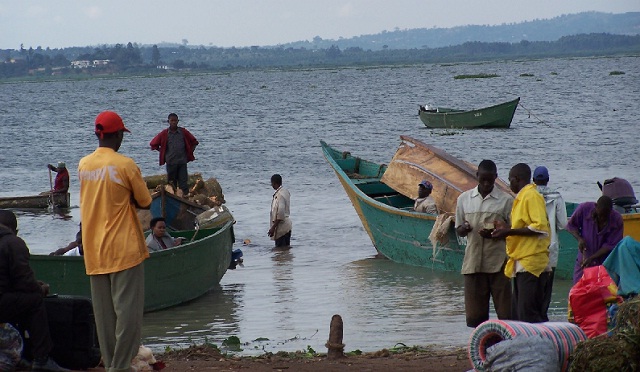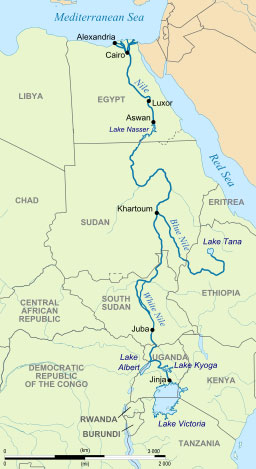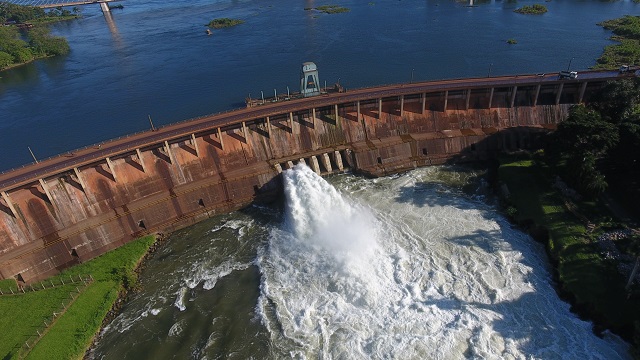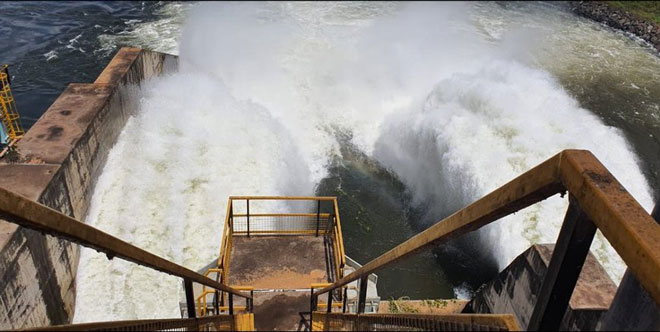





Kampala, Uganda | THE INDEPENDENT | The rise in Lake Victoria’s water level has renewed a controversy between Kenya and Uganda over water usage. Between 2005-2006, Kenya had complained that Uganda was drawing much more water to run Kiira and Nalubaale power dams in Jinja.
At the time, Lake Victoria’s water levels were at their lowest in 80 years. Now, reports indicate that Kenya is bitter that Uganda through the dams in Jinja is releasing less water risking the lives and property of Kenyans around the Lake Victoria basin.
Kenya, whose towns like Kisumu have been flooded fear that if more water is not released, more properties along Lake Victoria’s shores will be submerged.
The intense rains that started around August last year have raised Victoria’s water levels to over 13.4 meters, a mark last recorded in 1964.
Kenya is using the latest increase in water levels to push Uganda to enter negotiations for a regional policy governing the release of water at Jinja. The issue of a water release policy had come up at the East Africa Community.
It had been fronted by Kenya following a contentious recommendation by a Kenya-based hydrology expert. Uganda opposed the idea insisting that it could only negotiate if Kenya and Tanzania were to broaden the idea to include water abstraction.
Uganda insists that such a policy should not only look at the outflow but what is bringing water into Lake Victoria.

Twenty rivers
Over twenty rivers from the East African region countries contribute to the Lake Victoria basin. Uganda demands Lake Victoria should be managed as a basin or a system.
Water and Environment Ministry Permanent Secretary, Alfred Okot Okidi told journalists on Monday that Uganda is not bound by the policy suggested by Kenya because the matter was not resolved.
“Uganda objected to attempts to put a release policy based on a study. Our position as a country is that when you look at Lake Victoria, we should look at as basin as a system. So what we want for the benefit of people of East Africa for sustainability is the release and abstraction policy. There are more than twenty rivers that feed into Lake Victoria, if they are not managed, opening tap at Jinja will be futile”.
Several studies have found that since the completion of Owen Falls Dam, the release of water for hydropower generation has been based on an agreed curve between the British and Egyptian governments in 1954.

Under the agreed curve policy, water releases through the dam were determined by the prevailing water level. Water flows into the River Nile would be natural as if there was no dam. Uganda accorded to documented evidence deviated from the agreed curve, released much more water from Kiira and Nalubale in 2001-2006.
At the time, the region had experienced below normal lake rainfall. Uganda was forced to over release off water for hydropower despite reduced net basin supply of water.
Uganda’s Commissioner for Water Resources Planning and Regulation, Dr Callist Tindimugaya denies that Uganda’s refusal to release more water through Kiira, Nalubaale and Bujagali dams is responsible for flooding in Kisumu.
“Whatever is happening in Kisumu is not connected to what Uganda is doing. Right now what we are doing is much higher than we have ordinarily been releasing. We had remained to release one thousand cubic meters per second, then obviously many places would be underwater. But the higher the water level, the more we release” said Tindimugaya.
According to Tindimugaya, Uganda is right now releasing more than two thousand four hundred cubic meters per second because the water levels have gone higher. “If the level go down, you will see us instructing the hydropower dams to reduce. Every day we are monitoring how the level is changing”
Dr Tindimugaya says Uganda’s position is to ensure that water balance for Lake Victoria by looking at the input and output quantities to ensure that the storage level is in the control.
“So it is very important that we maintain the level of the Lake high enough to be able to meet the demand. And that is why we are interested in how much water is coming from other countries. You imagine if the 23 rivers were all tapped and there is no water coming into Lake Victoria. The lake would dry by its self. And that is why we are interested in how much is being abstracted by those countries” Tindimugaya explained.

In 2006, the East African Community through the Lake Victoria Basin Commission ordered for a special probe into declining water levels of Lake Victoria.
While the study asked the partner states to make deliberate efforts to reduce dependency on hydropower, it asked Uganda to construct a power station downstream of Nalubaale/Kiira power facilities. The study suggesed EAC and the other partner states should assist Uganda in this endeavour.
Uganda was tasked to reduce water releases at Jinja and move towards the Agreed Curve release policy. The EAC should by 2007, initiate a process to formulate and implement a new adaptive lake regulation policy, based on a modification of the old Agreed Curve.
The EAC partner states should within five years formulate and implement a watershed management program to reverse the decline in lake levels, restore its ecological integrity and enhance the sustainability of associated ecosystems and landscapes. Such a program should include afforestation, wetland management and appropriate agricultural practices.
******
URN
 The Independent Uganda: You get the Truth we Pay the Price
The Independent Uganda: You get the Truth we Pay the Price



